Background – How it started
The conflict between Armenia and Azerbaijan over the region of Nagorno-Karabakh began in 1988, back then still being a part of the Soviet Union. Nagorno-Karabakh was established as an autonomous region in the 1920s by the Soviet Union as a region within Azerbaijan with a predominantly Armenian population. The Armenian population of Nagorno-Karabakh demanded the enclave’s transfer to Armenia, but the Soviet Union refused. It managed to keep the situation under control and prevent escalations, but tensions intensified when the Soviet Union collapsed.
The war officially erupted in 1991, when the predominantly Armenian population of the Nagorno-Karabakh region demanded unification with Armenia and lasted until 1994. The conflict claimed over 30000 lives and displaced hundreds of thousands. In 1994, a ceasefire along the so-called contact line put a hold on the war. Since then, the territorial dispute has often been described as a “frozen conflict” or as a protracted conflict in the region with significant security implications for the South Caucasus and nearby regions (Simao, 2011: 50).
Nagorno-Karabakh is internationally recognized as Azerbaijani territory. However, over 90% of the region’s population are still ethnically Armenian.
Recent Tensions
While the conflict remained frozen for more than a decade, periodic outbursts of violence occurred over the years. New tensions arose in 2016 due to ceasefire violations and a breakdown in talks, and they remained high until today.
In summer 2020, the conflict between Armenia and Azerbaijan started to heat up again, and in September 2020, both sides enacted martial law after multiple reciprocal accusations. Azerbaijan accused Armenia of the concentration of Armenian forces near the line of contact and the killing of an Azerbaijani soldier by Armenian troops, while Armenia accused Azerbaijan of the downing of an Armenian unarmed aerial vehicle. The fighting started in September 2020, and it is the most serious since the ceasefire had been brokered in 1994.
Several negotiation and mediation efforts within international formats, such as the OSCE’s Minsk Group, which was created in 1994 and is co-chaired by France, the Russian Federation, and the United States, attempted to bring a political solution to the table but failed so far.
EU relations under the Neighbourhood Policy
EU relations with the South Caucasus are roughly subsumed under the European Neighbourhood Policy (ENP), specifically the Eastern Branch of it, the Eastern Partnership (EaP).
Though the EU was present in the region from the 1990s onwards, it lacked a comprehensive strategy and policy towards the region. Before the ENP was launched, its main framework for cooperation was the Partnership and Cooperation Agreement (PCA), which were concluded in 1996. However, due to a lack of ambition and strategy, little progress was made. Only from 2000 onwards, the EU started to engage more with the region and contributed towards conflict prevention and post-conflict rehabilitation. In order to revive the ENP, the EaP was launched.
Generally, the EU’s increased attention in the south Caucasus is often seen as being brought about by several geopolitical and geostrategic presumptions. One of them, as further elaborated below, is the EU’s need for search of an alternative due to its dependence on Russian energy and Mediterranean oil supplies.
All in all, one can say that the relations with neither Armenia nor Azerbaijan are very developed. The EU also showed limited involvement in resolving the Nagorno-Karabakh conflict (Ghazaryan, 2010: 223-27). This is a pity, given that the EU could have a potential positive impact on the resolution of this conflict since it cooperates with both countries within the EaP framework. For the EU to resemble a credible global actor and partner within the EaP, it cannot continue to stand by as an observer and avoid engagement.
Geopolitics – Other involved actors
The South Caucasian region is heavily influenced by various political actors such as Russia, the US, Turkey and Iran (Ghazaryan, 2010: 227). The EU, therefore, has a hard time pursuing its interests.
Russia considers the South Caucasian region as its historical zone of influence and is therefore actively involved in its regional politics. It is also Armenia’s most important ally and security guarantor since they cooperate on a military basis, and Russia also holds military bases in the country. Armenia, being economically isolated due to existing cooperation between Turkey, Georgia, and the hostile neighbour, Azerbaijan, is also strongly dependent on Russian energy supplies. Russian cooperation with Azerbaijan exists, albeit to a lesser extent than between Russia and Armenia (Ghazaryan, 2010: 228).
American interest in the region, similar to Europe, centres on the region’s energy resources. Azerbaijan is also an important strategic partner in the US war on terror, as US military forces have permission to use its territory, and Azerbaijan sent troops to Afghanistan and Iraq.
The relations between the US and Armenia are primarily marked by a strong Armenia lobby in the US Congress. Armenia also received the highest per capita financial aid from the US from all former Soviet republics (Ghazaryan, 2010: 228-29).
Iran and Turkey are likewise important regional players. Turkey has no diplomatic relations with Armenia but is cooperating with Azerbaijan. Iran, however, serves as the main alternative to Armenia’s export route through Georgia. Cooperation with Iran is also crucial for Armenia to diversify its energy supplies (Ghazaryan, 2010: 229).
In conclusion, both Armenia and Azerbaijan have alliances with different actors. While Armenia is allied with Iran and the US, Azerbaijan upholds relations with the US, but also Russia and Turkey.
The alignment of these other global players with one of these two hostile countries further adds to the complexity of the tensions between Armenia and Azerbaijan and may exacerbate the conflict. Additionally, it may also lead to tensions and complications in the relations between these involved actors. For example, Russia has promised to defend Armenia, while Turkey promised support for Azerbaijan. Turkish President Erdogan claimed that Armenia is “the biggest threat to peace and security in the region”. Turkey and Russia also back opposing parties in the Libyan and Syrian conflict, and their ambitions in the Balkans and in Ukraine are incompatible. As argued by Foreign Affairs, Turkey may see its involvement in Nagorno-Karabakh partly as a bargaining chip in its rivalry with Russia.
Hence, concerns remain that the conflict may “spill out of the region and draw in neighbouring powers“.
Geostrategic importance of peace between Armenia and Azerbaijan
While peace between Armenia and Azerbaijan is essential for the stability and prosperity of the whole region, also the undisrupted supply of gas and oil plays a geostrategic importance. The area serves as an energy corridor for the global market, and conflict in this area could therefore disrupt oil and gas exports. Moreover, Azerbaijan is an important oil and gas exporter to Europe and Central Asia. The EU’s dependence on Russian energy and Mediterranean oil supplies make the South Caucasian region strategically important, as it provides alternative solutions and may decrease the EU’s dependence on Russia (Ghazaryan, 2010: 227).
The war, therefore, presents a threat to Europe’s gas and oil supply. As reported in the WSJ, as long as armed conflict between Armenia and Azerbaijan continues to take place in the region of Nagorno-Karabakh, the pipelines that transfer the gas and oil to Europe are unlikely to be damaged. However, if hostilities start taking place along the whole length of the border, these pipelines may be damaged, hampering energy supply to Europe.
Hence, securing sustainable long-term peace in the region is of strategic importance for the European Union.
In any case, Russian support for the resolution of this conflict is imperative. Also, according to an analysis by the International Crisis Group, Russia together with Europe stands a higher chance of brokering a ceasefire. Russia upholds relations with both sides to the conflict and is also part of the OSCE Minsk Group, which has been involved in peace efforts in Nagorno-Karabakh for decades. In 2016, when tensions arose again between Armenia and Azerbaijan, Russia was also involved and helped end the violence.
Now, Russia once again offered to mediate. However, as stated by the International Crisis Group, faith in the Minsk Group-led talks has been lost on both sides. It is, therefore, doubtable that a similar agreement can be reached this time.
Conclusion – A call for the EU to step in
However the situation is going to be resolved this time and if major disruption and spiralling into a full-fledged war can be averted, involved actors and international institutions should not only decrease tensions but also, most importantly, finally negotiate a sustainable political solution. Another long-term frozen conflict in the region would mean yet another war that might break out anytime. It would thereby present a source of instability to the whole region and the EU.
International efforts, led by international organizations and institutions, such as the UN or the OSCE, are needed to help successfully decrease tensions. The OSCE Minks group under France, Russia and the US should push both countries to return to the negotiation table and find a resolution to this conflict.
Especially Russia, having considerable leverage in the region, should step in and negotiate to stop the fighting. Also, other involved actors such as Turkey and Iran could be invited to the Minsk Format and take part in the mediation process. Iran and Turkey should also refrain from fomenting unrest and support the international community in its call to stop fighting.
Considering that Armenia and Azerbaijan lie in the EU’s neighbourhood, another conflict in this region means instability in the EU’s vicinity and, therefore, a threat to the EU’s security. Given that these countries are also part of the EU’s Eastern Partnership, the EU should show engagement, support the return to negotiations and look for paths to sustainable and long-lasting peace. Another frozen conflict in the region that could heat up any time soon is dangerous and a source of instability.
The EU, therefore, needs to act fast and contribute to de-escalation efforts to prevent the situation from further spiralling out of control. It should also use its soft power to bring about a long-term solution. Given that both, Armenia and Azerbaijan are countries of the EaP, the EU should use its political force and economic might to incentivize a peaceful negotiation between the two countries and provide the diplomatic channels necessary to achieve a return to normality and peace – and not the return to a frozen conflict.
The EU cannot afford to stand by and watch this conflict evolve. Instead, it should mobilize all its efforts to help bring about a solution.
SourcesBBC (2020): Armenia and Azerbaijan fight over disputed Nagorno-Karabakh region, https://www.bbc.com/news/world-europe-54323553, accessed 03.10.2020
Council on Foreign Relations: Nagorno-Karabakh Conflict (2020), Global Conflict Tracker, https://www.cfr.org/global-conflict-tracker/conflict/nagorno-karabakh-conflict, last accessed 30.09.2020
Ghazaryan, N. (2010): The ENP and the Southern Caucasus: Meeting the Expectations? in Whitman, R., Wolff, S. (Eds.), (2010): The European Neighbourhood Policy in Perspective – Context, Implementation and Impact, pp. 223-246, PALGRAVE MACMILLAN.
Huseynov, H. (2020)Another war on the horizon in the Armenia – Azerbaijan conflict? (2020), Euractiv, https://www.euractiv.com/section/global-europe/opinion/another-war-on-the-horizon-in-the-armenia-azerbaijan-conflict/, last accessed 30.09.2020
Mankoff, J. (2020): Why Armenia and Azerbaijan Are on the Brink of War, Foreign Affairs, https://www.foreignaffairs.com/articles/turkey/2020-10-01/why-armenia-and-azerbaijan-are-brink-war, accessed 03.10.2020
Simao, L . (2011): Are civil society organizations the missing link? Assessing EU engagement in the Nagorno-Karabakh conflict, in Tocci, N., (Eds), (2011): The European Union, Civil Society and Conflict, pp. 50-74, Routledge.
Simmons, A. & Gauthier-Villars, D. (2020): Armenia-Azerbaijan Conflict: What’s Behind the Fighting in Nagorno-Karabakh, Wall Street Journal, https://www.wsj.com/articles/armenia-azerbaijan-conflict-whats-behind-the-fighting-in-nagorno-karabakh-11601325097, last accessed 30.09.2020
Sullivan, R. & Hauser, J. (2020): Clashes break out between Armenia and Azerbaijan over disputed region, CNN, https://edition.cnn.com/2020/09/27/europe/armenia-azerbaijan-tensions-nagorno-karabakh-intl/index.html, accessed 03.10.2020

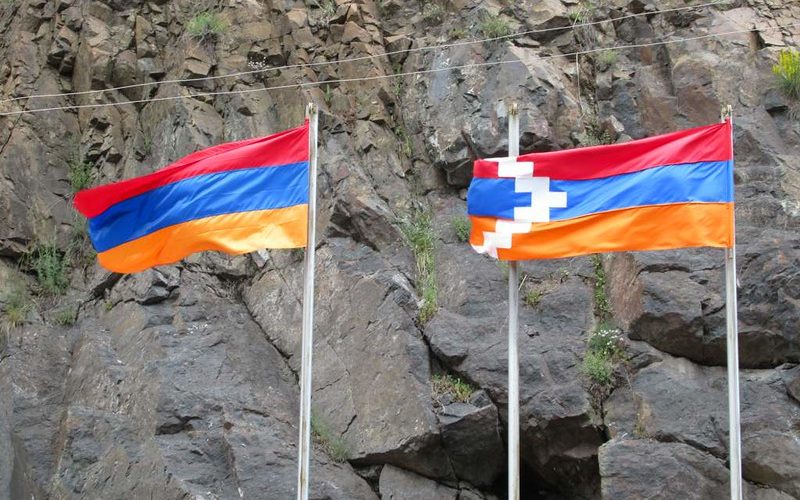
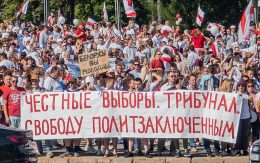
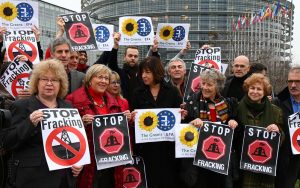
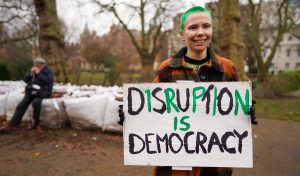
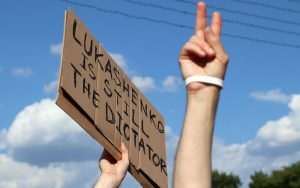


Be First to Comment